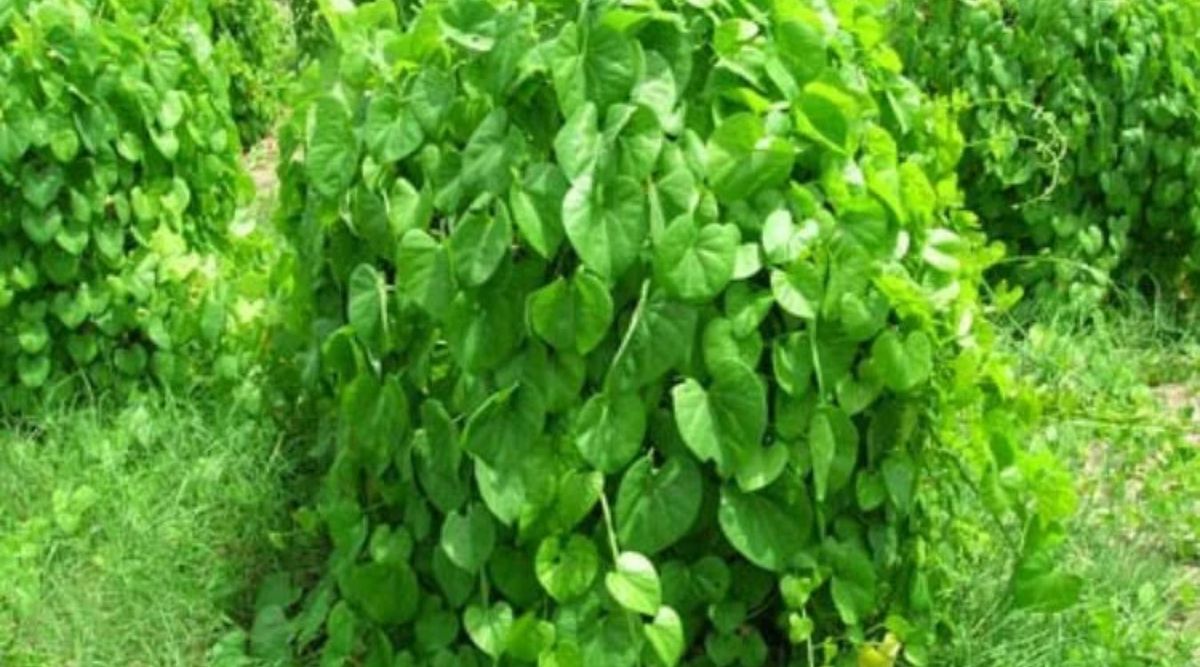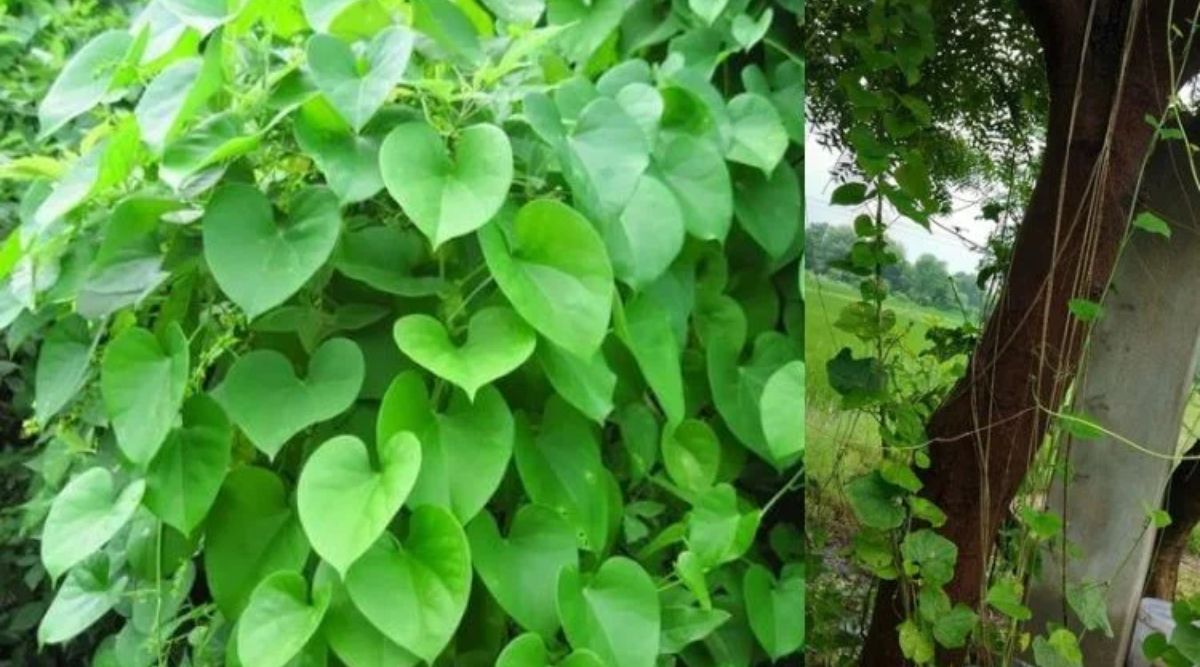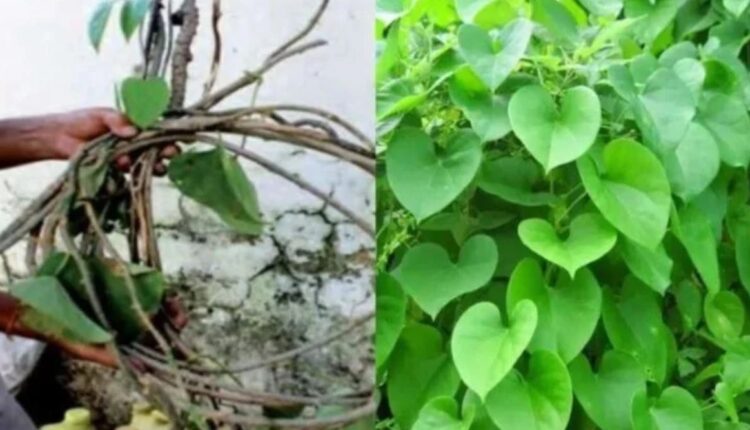Giloy cultivation is a big source of good income for farmers
Growing market of medicinal plants, government is helping, can take training and subsidy
The demand for medicinal plants has increased in the Corona epidemic. The demand for medicinal products is proving very beneficial for the farmers. Due to low production and high demand, farmers are also getting good prices for medicinal crops. This is the reason why the trend of farmers is continuously increasing towards medicinal farming. One such medicinal plant is Giloy. Giloy has been used as a medicine in Ayurveda for centuries, but its popularity among common people increased further after Covid-19. At the beginning of Corona, almost everyone started drinking Giloy juice to boost immunity.
Actually, Giloy, which spreads like a vine, is very beneficial for health and helps in protecting against many diseases. The demand for Giloy is high in Ayurvedic medicine companies, so its cultivation is a profitable deal for the farmers. The government is also promoting the cultivation of medicinal plants.

Suitable soil and climate for Giloy cultivation
Giloy plant is very strong. That’s why Giloy cultivation is possible in any type of soil, but it grows faster in sandy loam soil. Humid climate is suitable for its growth. The months from February to September are suitable for Giloy cultivation. Where Giloy is being planted, water should not accumulate there.
Nursery for Giloy cultivation
Nursery of Giloy plants can also be easily prepared in plastic bags. Nursery can be made by planting its cuttings in bags. Once Giloy is planted well, it spreads very quickly. The shape of its leaves is similar to betel leaves, but the taste of Giloy is bitter. Generally, the vine of Giloy climbs up with the support of other trees and the qualities of the tree on which it climbs also come in Giloy. The Giloy that grows on the Neem tree is called Neem Giloy and is considered very beneficial. Apart from this, Giloy climbing on the drumstick tree is also beneficial for health.

Planting giloy in the field
Before planting Giloy plant in the field, the field should be plowed properly and weeds etc. should be removed. Then 10 tons of fertilizer per hectare and half dose of nitrogen (75 Kg) should be applied in the field. Due to this the plants grow well. Stem cuttings including Giloy’s knot can be planted directly in the field. For good yield keep plant to plant distance of 3 meters. Giloy needs support to grow, for this you can use wooden stakes. Giloy plants do not require much irrigation and weeding. Another specialty of the Giloy plant is that it does not get affected by any kind of insect.
Post harvest storage
Generally, the stem of Giloy is harvested in October. It is carefully cut into small pieces, dried thoroughly in shade, filled in jute bags and kept in a cool place.
There is more demand for neem coated giloy
Giloy mounted on neem is full of medicinal properties and it is used in making Ayurvedic medicine. Hence its demand is very high. Giloy is very helpful in increasing immunity from diabetes to heart disease, dengue, etc.

Soil protection from Giloy cultivation
Giloy plant prevents soil erosion. By cultivating Giloy on barren, fallow and stony land, the environment can be protected and soil erosion can be stopped.
The place where Giloy vine grows, the soil at that place also remains safe and protected. Giloy leaves cover the upper surface of the soil, which prevents the soil from getting polluted. The cultivation of Giloy should be encouraged even on barren land, fallow land and stony land, which helps in environment and soil erosion. Root of Giloy Giloy’s roots have fine fibers. Along with fibers it also helps in conserving the soil.

Training and subsidy on cultivation of medicinal plants
The government is also helping the farmers for the cultivation of medicinal plants. In the economic package given under the Self-reliant India campaign, Rs 4000 crore has been given to encourage medicinal farming. State governments are also promoting the cultivation of medicinal plants at their own level. This includes arrangements ranging from subsidy on seeds to training. Farmers can get more information in this regard by contacting the horticulture department of their district.
Herbal products worth crores of rupees are traded annually in the Indian market. According to a figure, the market for herbal products in the country is about Rs 50,000 crore, which is growing at the rate of 15% annually. Tulsi, which was sold for Rs 35 before the Corona period, is now being sold at the rate of Rs 40 to 45 per kg. Due to increase in the demand of Ghritkumar (Aloe vera), the pulp which was sold at Rs.35 per kg is now being sold at Rs.40 and the juice which was sold at Rs.40 per litre is now being sold at Rs.50. And the price of Giloy juice in the market is Rs 200 to 300 per litre. The cost of one kg packet of Bhringraj powder is 400 to 500 rupees. The price of Mogre oil ranges from Rs 1500 to Rs 5000 per kg. The price of 450 ml packet of Shankhpushpi syrup is around 200 to 240 rupees. In such a situation, it is a big step to encourage the farmers for the cultivation of herbs. This will also make the country self-sufficient in terms of availability of medicines.
Also Read: Walnut production : 90% of India’s walnuts are produced in Kashmir, but How ?
Contact us – If farmers want to share any valuable information or experiences related to farming, they can connect with us via phone or whatsapp at 9599273766 or you can write to us at “kisanofindia.mail@gmail.com”. Through Kisan of India, we will convey your message to the people, because we believe that if the farmers are advanced then the country is happy.
You can connect with Kisan of India on Facebook, Twitter, and Whatsapp and Subscribe to our YouTube channel.

